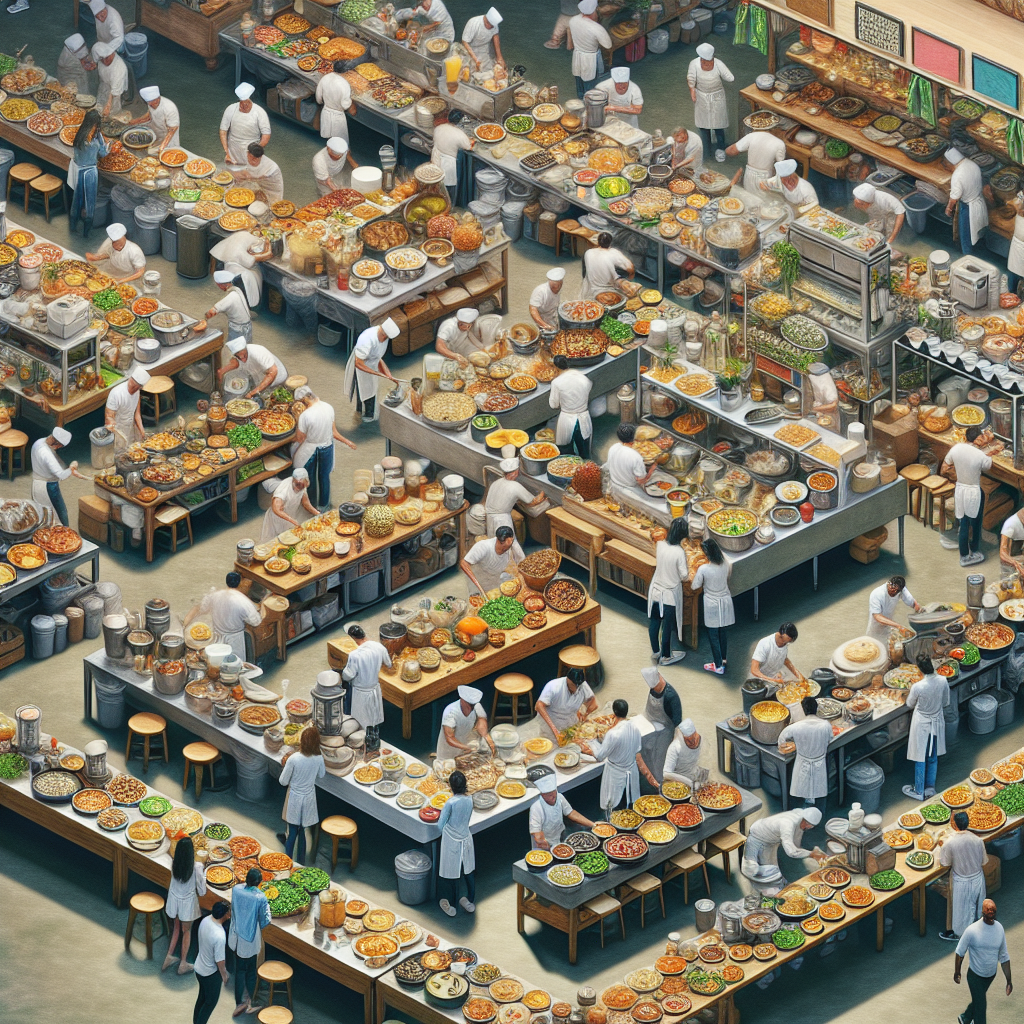The Role of Artificial Intelligence in Restaurant Operations
In recent years, artificial intelligence (AI) has been making waves in various industries, including the foodservice industry. Restaurants are increasingly turning to AI to streamline operations, improve efficiency, and enhance customer experiences. In this report, we will delve into the various ways AI is transforming restaurant operations and the impact it is having on the industry as a whole.
Current Landscape of the Foodservice Industry
Before diving into the role of AI in restaurant operations, it is essential to understand the current landscape of the foodservice industry. According to a report by CulinaryCoverage.com, the foodservice industry in 2025 is experiencing significant growth, with consumers increasingly turning to restaurants for convenience and dining experiences. The industry is expected to reach a market value of $1.2 trillion by 2025, driven by changing consumer preferences and technological advancements.
Market Share and Trends
In terms of market share, fast-casual restaurants are gaining popularity, offering a balance between quick service and high-quality food. This shift is driven by millennials and Gen Z consumers who value convenience, customization, and health-conscious options. Traditional fast-food chains are also adapting to these trends by incorporating technology and digital ordering platforms to cater to changing consumer preferences.
Challenges Faced by Restaurants
Despite the growth opportunities in the foodservice industry, restaurants face several challenges, including rising labor costs, supply chain disruptions, and changing consumer expectations. To stay competitive and profitable, restaurants need to adapt to these challenges by leveraging technology and innovation.
The Role of AI in Restaurant Operations
AI is revolutionizing restaurant operations by automating repetitive tasks, optimizing processes, and personalizing customer experiences. From back-of-house operations to front-of-house interactions, AI is reshaping how restaurants operate and engage with customers. Let’s explore some key areas where AI is making an impact:
1. Inventory Management
One of the significant challenges restaurants face is managing inventory efficiently to reduce waste and optimize costs. AI-powered inventory management systems use predictive analytics to forecast demand, track inventory levels, and automate ordering processes. By analyzing historical data and real-time sales, AI can help restaurants make data-driven decisions to minimize food waste and ensure optimal inventory levels.
For example, a fast-casual restaurant chain implemented an AI-powered inventory management system that reduced food waste by 30% and improved inventory turnover by 20%. The system automatically adjusted order quantities based on demand patterns, resulting in cost savings and improved operational efficiency.
2. Menu Optimization
AI algorithms can analyze customer preferences, sales data, and market trends to optimize menu offerings and pricing strategies. By leveraging AI, restaurants can identify popular menu items, predict seasonal trends, and adjust pricing dynamically to maximize profitability. AI-powered menu optimization tools can also recommend menu changes based on customer feedback and preferences, allowing restaurants to tailor their offerings to meet evolving consumer demands.
For instance, a fine dining restaurant used AI to analyze customer reviews and social media data to identify popular dishes and trends. By incorporating AI recommendations into their menu, the restaurant saw a 15% increase in sales and improved customer satisfaction ratings.
3. Customer Service and Personalization
AI-powered chatbots and virtual assistants are transforming customer service in restaurants by providing personalized recommendations, handling reservations, and addressing customer inquiries. Chatbots can engage with customers in real-time, answer frequently asked questions, and offer tailored suggestions based on individual preferences. By integrating AI into customer service operations, restaurants can enhance the overall dining experience and build customer loyalty.
For example, a fast-food chain implemented a chatbot on their website and mobile app to assist customers with ordering and payment processes. The chatbot used natural language processing to understand customer requests and provide personalized recommendations, resulting in a 20% increase in online orders and improved customer satisfaction levels.
4. Predictive Maintenance
AI-powered predictive maintenance systems can monitor equipment performance, detect anomalies, and schedule maintenance tasks proactively. By analyzing sensor data and machine learning algorithms, AI can predict equipment failures before they occur, reducing downtime and maintenance costs. Restaurants can use AI to optimize kitchen equipment, HVAC systems, and refrigeration units to ensure smooth operations and minimize disruptions.
For instance, a chain of coffee shops implemented an AI-driven predictive maintenance system to monitor their espresso machines and brewing equipment. The system analyzed usage patterns and performance data to schedule maintenance tasks and prevent equipment breakdowns. As a result, the coffee chain reduced downtime by 25% and saved on repair costs.
Future Trends and Innovations
Looking ahead, the role of AI in restaurant operations is expected to expand further, with innovations in robotics, voice recognition, and data analytics. Restaurants will continue to leverage AI to enhance efficiency, improve decision-making, and deliver personalized experiences to customers. As technology evolves, AI will play a crucial role in shaping the future of the foodservice industry.
In conclusion, AI is revolutionizing restaurant operations by optimizing processes, improving efficiency, and enhancing customer interactions. With the continued advancement of AI technologies, restaurants have the opportunity to drive growth, reduce costs, and stay competitive in a rapidly changing industry landscape. By embracing AI-driven solutions, restaurants can unlock new possibilities and deliver exceptional dining experiences to their customers.


